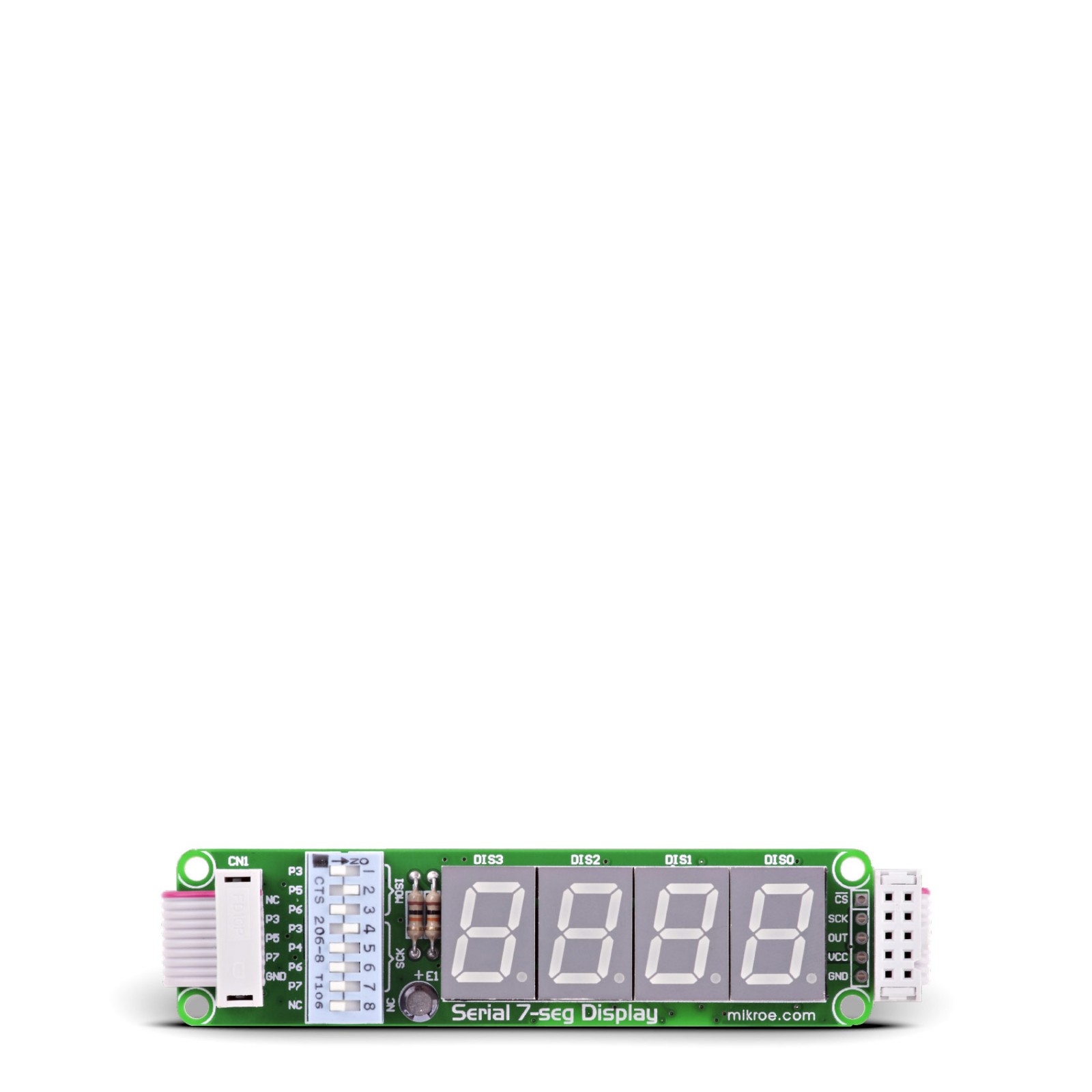Serial 7-seg Display Board
R645.00 ex. VAT
The Serial 7-seg Display Board features an onboard SPI interfaced, LED display driver MAX7219 and 4 common-cathode LED displays. The board is connected to a prototype device via an IDC10 connector and comes with examples.
Stock: Lead-time applicable.
| 5+ | R612.75 |
| 10+ | R580.50 |
| 15+ | R548.25 |
| 20+ | R527.61 |









